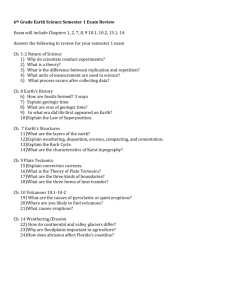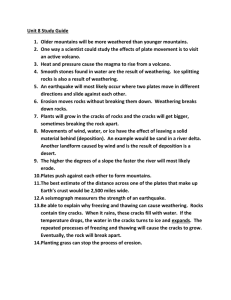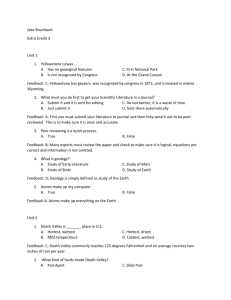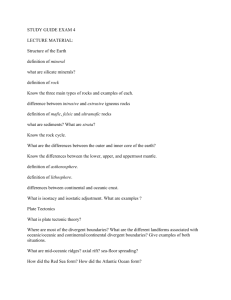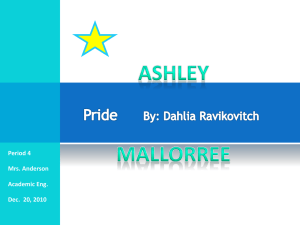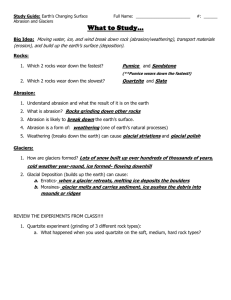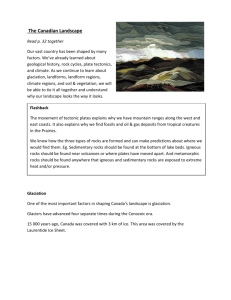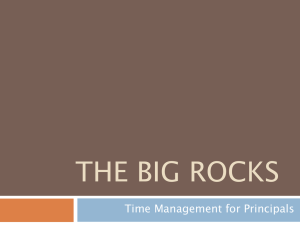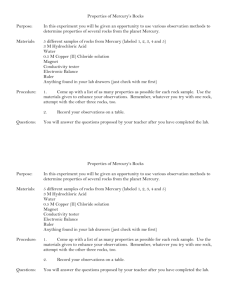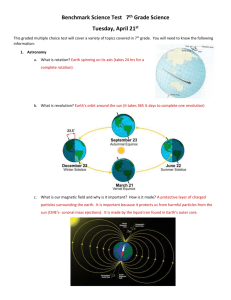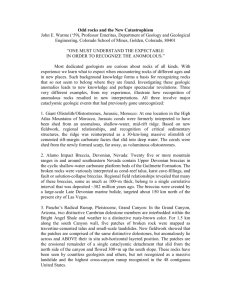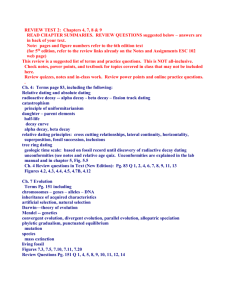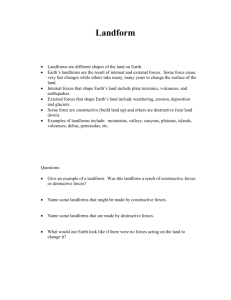3. Crust - SharpSchool
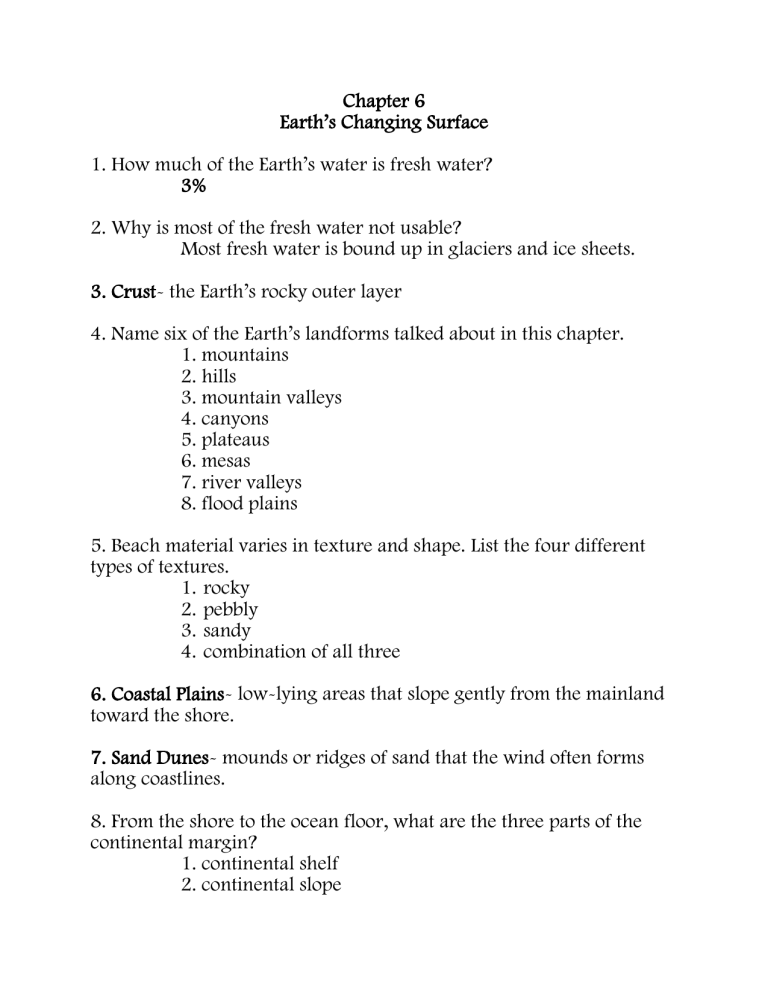
Chapter 6
Earth’s Changing Surface
1. How much of the Earth’s water is fresh water?
3%
2. Why is most of the fresh water not usable?
Most fresh water is bound up in glaciers and ice sheets.
3. Crust- the Earth’s rocky outer layer
4. Name six of the Earth’s landforms talked about in this chapter.
1. mountains
2. hills
3. mountain valleys
4. canyons
5. plateaus
6. mesas
7. river valleys
8. flood plains
5. Beach material varies in texture and shape. List the four different types of textures.
1.
rocky
2.
pebbly
3.
sandy
4.
combination of all three
6. Coastal Plains- low-lying areas that slope gently from the mainland toward the shore.
7. Sand Dunes- mounds or ridges of sand that the wind often forms along coastlines.
8. From the shore to the ocean floor, what are the three parts of the continental margin?
1. continental shelf
2. continental slope
3. continental rise
9. Seamounts- huge, steep-sided mountains rising from the ocean floor.
10. Explain what a guyot is and how one is formed.
Guyots are seamounts with flat tops. They may originally have risen above the surface, but were worn down over time and covered over with water.
11. Topographic Map- a map that shows the shape of surface features and their elevations, or heights above sea level.
12. Contour Lines- lines that connect points on the map that have the same elevation.
13. Weathering- a destructive force, or a force that breaks down something.
14. Name two types of weathering that can act on rocks. mechanical and chemical
15. Mechanical Weathering- is the breaking of larger rocks into smaller pieces of rock.
16. Describe the three ways that mechanical weathering may occur.
1.
Water can trickle into the cracks of rocks and freeze, breaking the rocks apart.
2.
Wind or rushing water hitting rocks can cause the rocks to weaken and crack or crumble.
3.
Plant roots can break rocks as the plant grows.
17. Chemical Weathering- is when rocks change into other materials.
18. Sediment- the smaller pieces of rock that are broken down from larger rocks by mechanical weathering.
19. Why do many caverns form in limestone?
The minerals in limestone are easily dissolved by acids.
20. Erosion- the carrying away of sediments by moving water, wind, or moving ice.
21. Describe one way that erosion wears down the Earth’s surface.
Glaciers carve out hollows in the land.
22. Landslides- large movements of land that tumble down a steep slope.
23. Name three examples of landslides.
1. mudslides
2. rock falls
3. avalanches
24. How does a landslide occur?
Through erosion or disturbance and gravity
25. Deposition-the dropping, or releasing, of sediments that have been moved from one place to another.
26. Alluvial Fan- a fan-shaped landmass that forms after a river rushes down a steep slope, then slows over a flat plain.
27. Delta- a low plain that forms where a river enters an ocean.
28. What process created the Himalaya Mountains?
They formed when huge sections of the Earth’s crust pushed into each other and the pressure caused the crust to fold.
29. How do glaciers deposit sediment?
They build up sediment when they move and release it when they melt.
30. Eskers- the winding ridges that melting glaciers deposit sand and gravel in.



